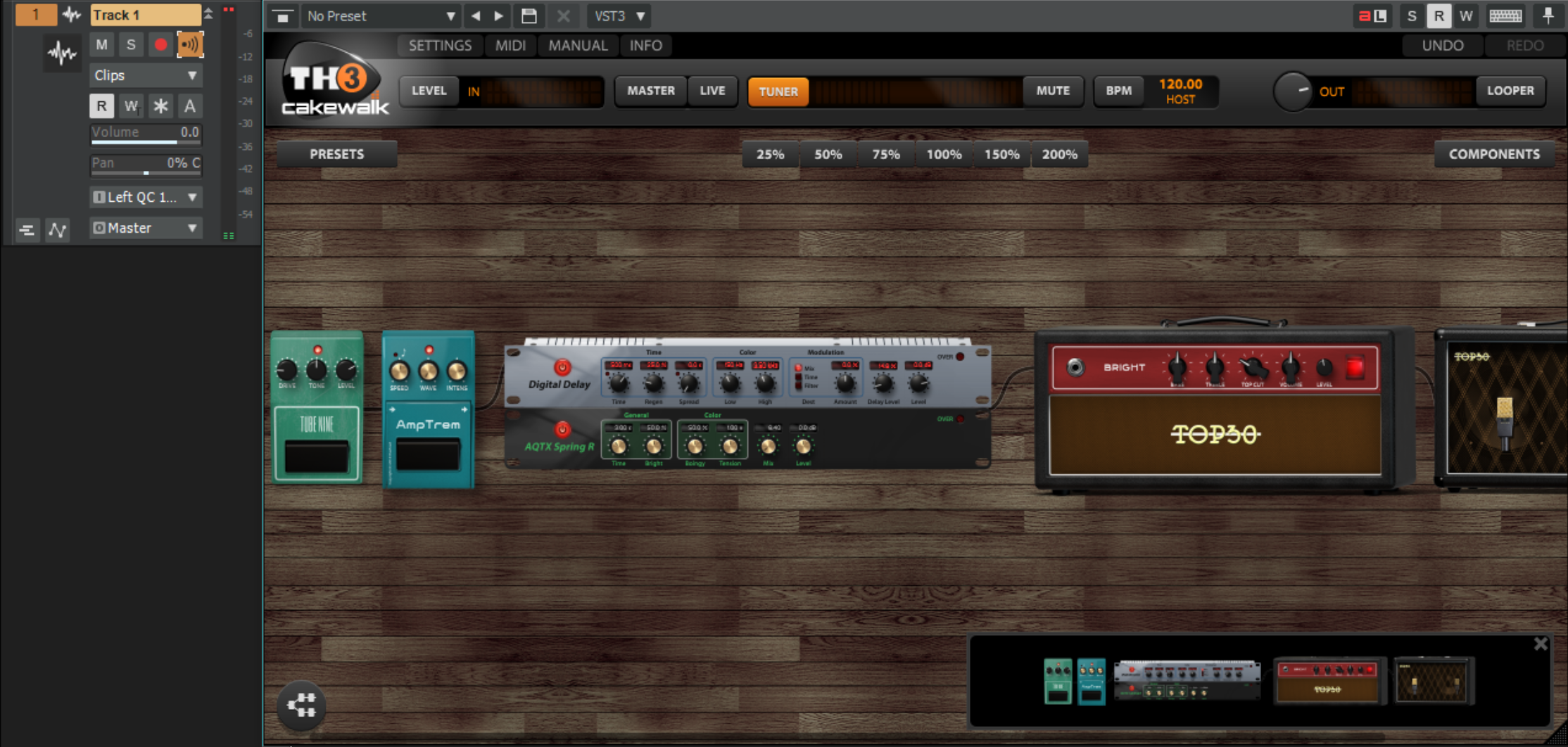Anybody with SONAR may use the TH3 Cakewalk version to get incredible guitar tones. It has a plethora of amps, cabinets, and effects, as well as the ability to change the location of the mic. You may also conduct stereo processing of effects to generate stereo delays or parallel processing by mixing two amps together.
Where do I begin?
Put TH3 into your guitar track and make sure you’re using the right input and that the Input Echo button is on so you can hear what’s inserted into that input.
When placing TH3 onto your guitar track, a smart place to start is to check your volume in the plug-in and the tuning of your guitar.
Check your level:
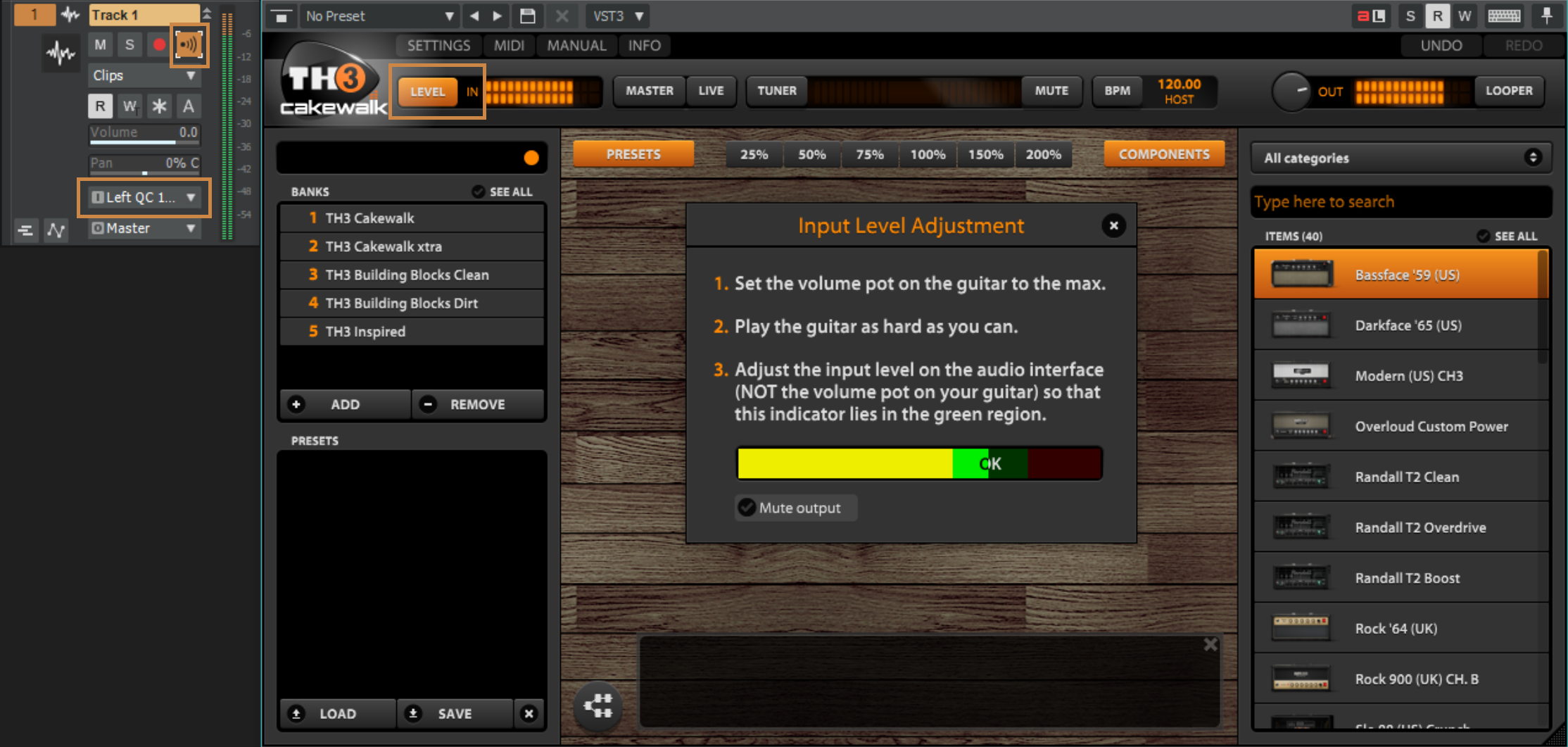
Tuning:
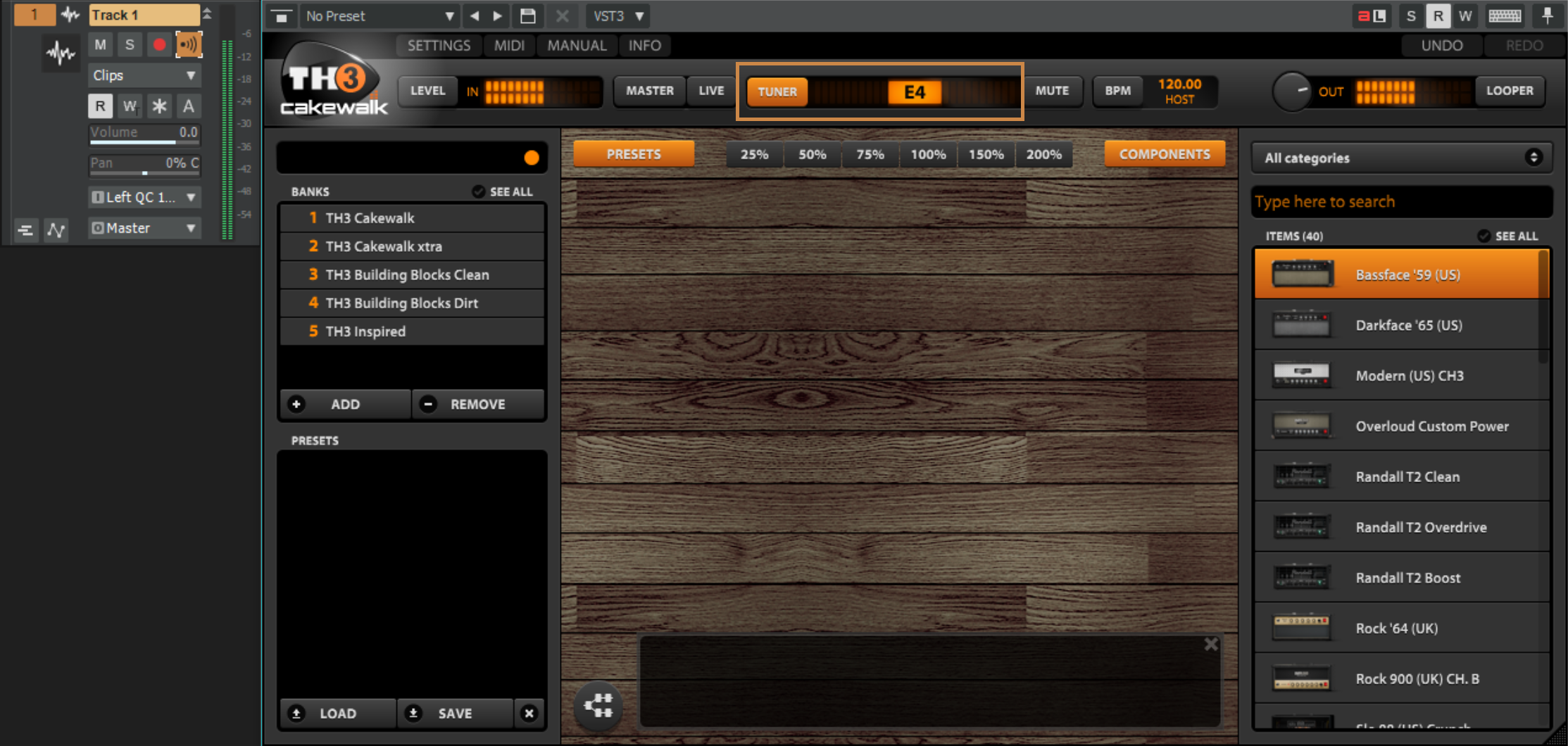
Play each string one at a time, adjusting until the tuning pin is in the center of each string.
Auditioning Amps
If it is not already open, open the [Components] section on the right and choose the amps category from the list. When you’ve chosen that, drag in the first amp from the top. When prompted to input a matching taxi, choose [YES PLEASE!].
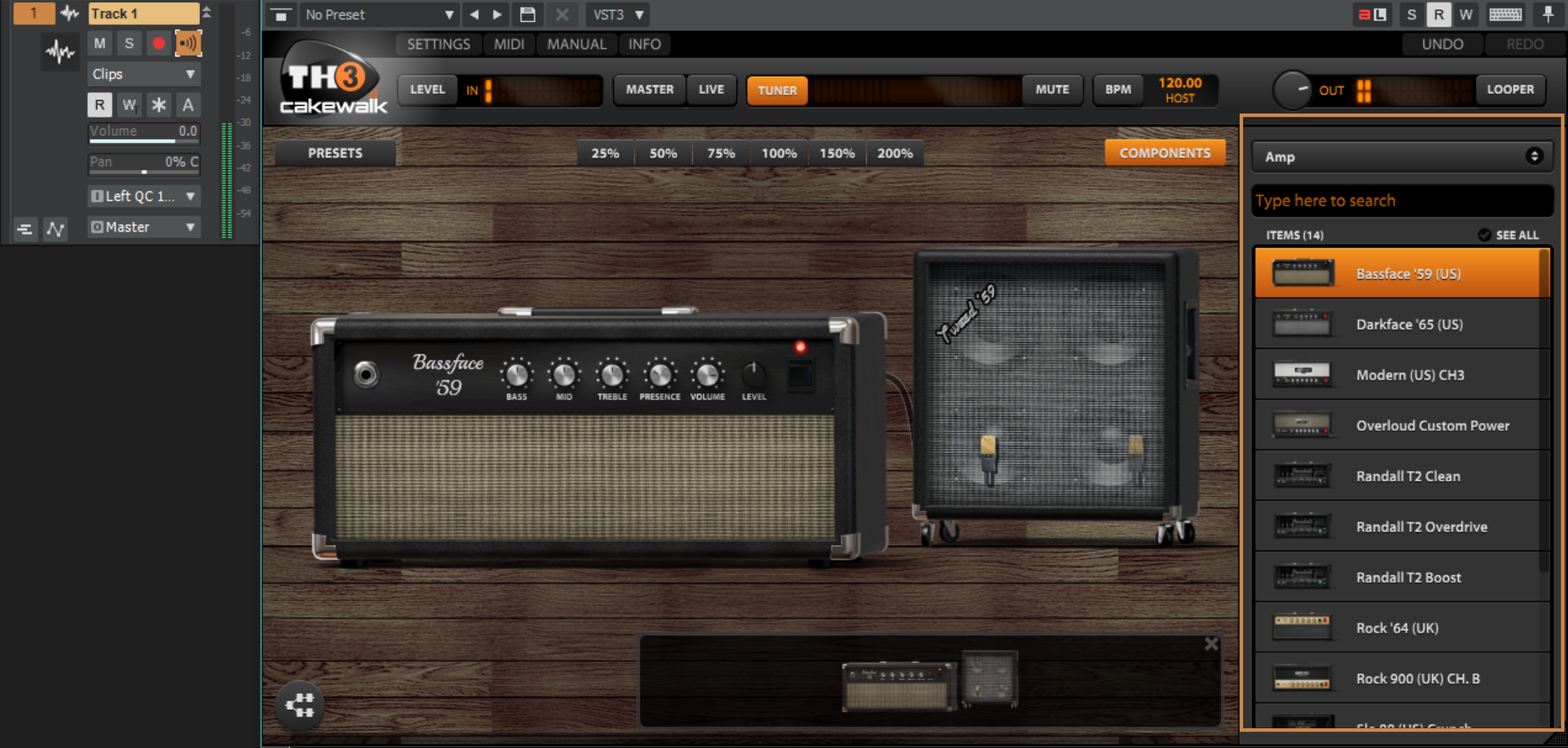
Give it a go! Click the up and down arrows in the upper left corner of the amp head or cab to audition additional amps and cabs. Based on your goals, this is where you should look for an amp that has some of the characteristics you want.
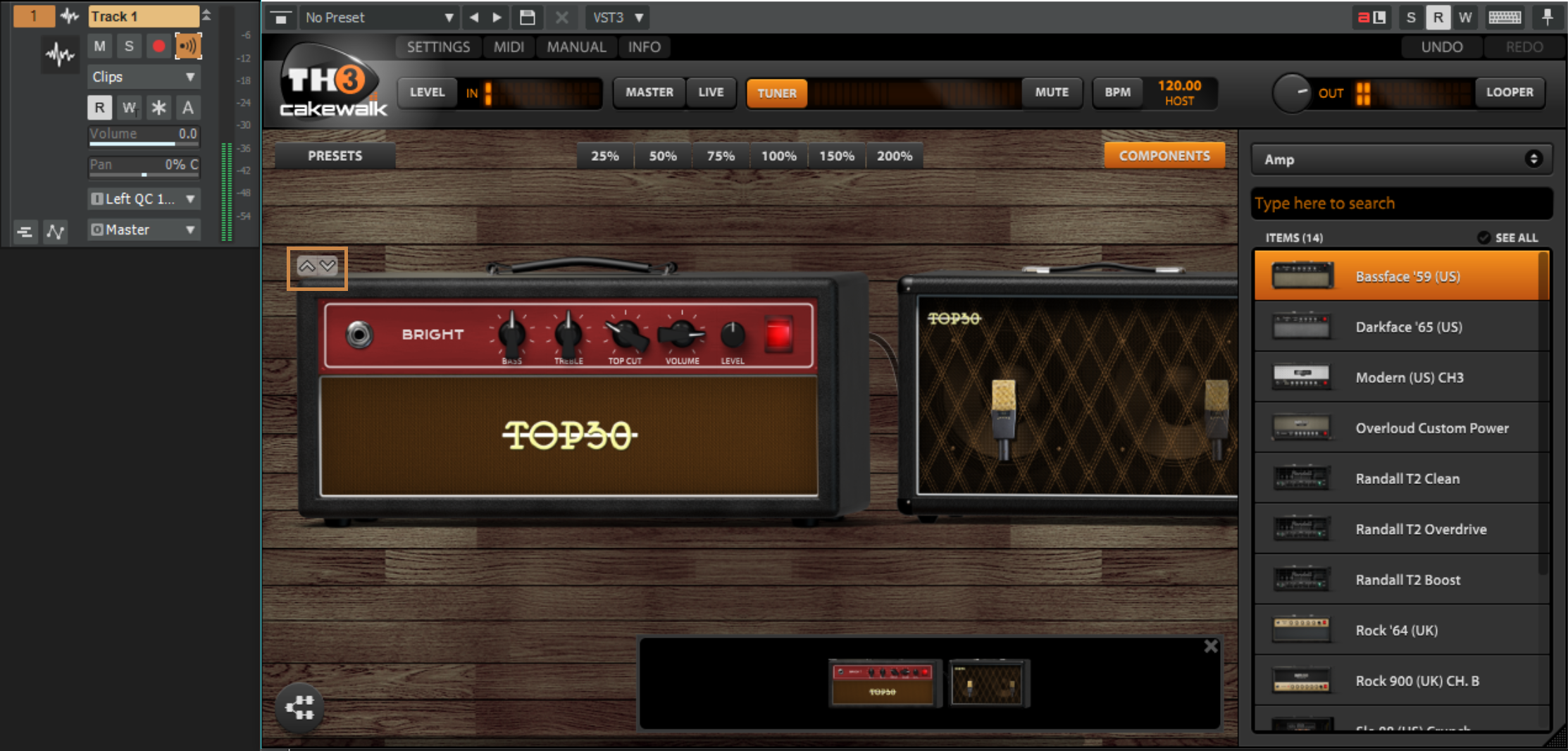
Below is a list of the amps contained in TH3 Cakewalk, as well as the units they are patterned after.
- Bassface ’59 – Modeled after the ’59 Fender Bassman
- Darkface ’65 – Modeled after the ’65 Fender Twin
- Modern – Modeled after the Mesa Boogie Dual Rectifier
- Overloud Custom Power – Overloud Custom amp
- Randall T2 – Official model of the Randall T2 head
- Rock ’64 – Modeled after the Marshall JTM45
- Rock 900 – Modeled after the Marshall JCM900
- Slo 88 – Modeled after the Soldano x88r
- THD Univalve – Official model of the THD Univalve Single- Ended Class A amplifier
- Top30 – Modeled after the Vox AC30
- Tweed Deluxe – Modeled after the Fender Tweed Deluxe
- Bass SuperTube VR – Modeled after the Ampeg SVT-VR
Now is the time to spice it up.
I’m trying for a really classic tone that’s generally clean with a hint of roughness. I chose a Top30 style head with a matching cab and will add an overdrive to the amp. Return to the Components section and pick the Overdrive category. Slide the TUBE NINE in front of the amp. Adjust the gain to taste using the “Drive” control and give it a try.
- TUBE NINE Overdrive
- FatMuff Fuzz
- FUZZRACE Fuzz
- CHR-2 Chorus
- Digital Delay
- RSS Compressor
- ANALOG FLANGER
- Rich Flanger
- 9-0′ Phaser
- AQTX Spring Reverb
- AmpTrem Tremelo
- Auto-Wah
- cry maybe Wah
- Gate Expander
- Volume
Controlling Space
Many of the classic guitar tones from the past need the use of spatial effects such as reverb and delay. These are some guidelines to follow when first starting out with reverb, delays, and other spacey effects.
- After distortions and overdrives, use modulation effects like Chorus, Phasers, and Flangers in the center of your chain.
- Delays should be used after Modulation effects.
- Put reverbs at the conclusion of your chain.
